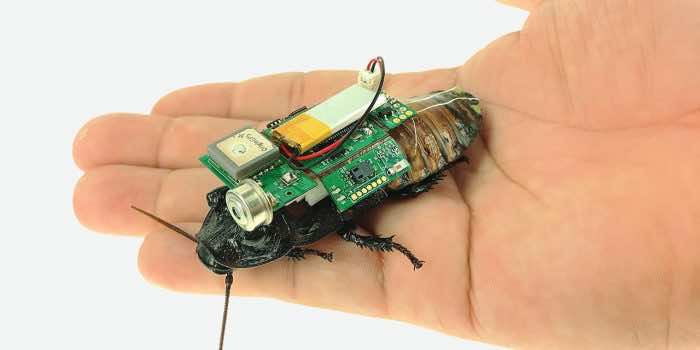Innovation in the field of emergency responses to disasters has been introduced and it has the potential to revolutionize the way of finding rescues. A group of researchers has developed a robotized roach to help search collapsed buildings for survivors.
Dr. Hirotaka Sato from Nanyang Technological University in Singapore has been working on cyber insects for 15 years. he did not develop this technology from scratch. Instead, he took the technology and concepts that already existed and applied them here.
Dr. Sato has created an innovative way to adapt Madagascan hissing cockroaches and make them autonomous agents for searching through rubble for signs of life.
The insects are 6 cm in length, and rather than their movements being dictated by remote controls, they are being controlled by algorithms that detect life and respond to sensors in their backpacks.
These backpacks are designed by the doctor and his team. They comprise a communication chip, a carbon dioxide sensor, a motion sensor, an infrared camera, and a battery.
With these roaches well equipped to save the day, fleets of them will be released through the rubble, using their tiny frame to get into hard-to-reach places that humans and larger animals would struggle to reach.
Their backpacks detect movement, body heat, and elevated CO2 levels, with the artificial intelligence deciding whether the presence of a person is detected, before alerting the rescuer.
Tests were conducted in a simulated disaster area, with Dr. Sato’s team laying out concrete blocks of various sizes over an area of 25 square meters.

Multiple people were made to lie around the area in rubble along with objects that might be present in a situation like this. These included a heat lamp, a microwave, and a laptop.
By the end of the experiment, these roaches had correctly recognized people 87 percent of the time.
Dr. Sato believes through further testing and enhancement, the production of these backpacks and automation of attaching them to insects could be commercialized within five years.


